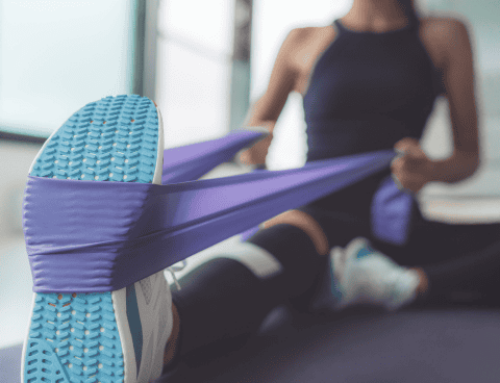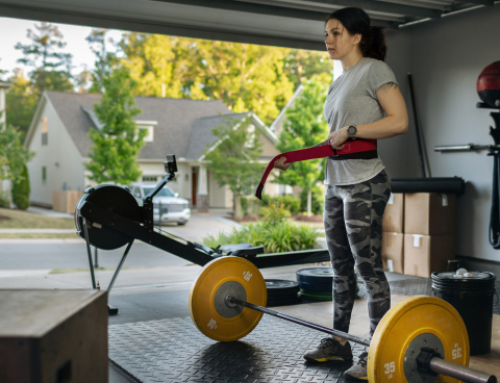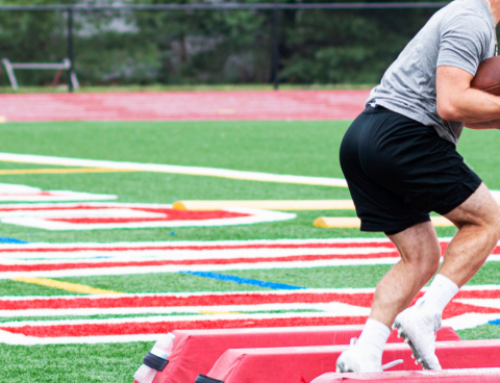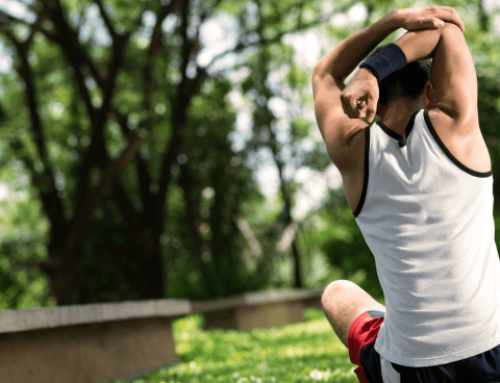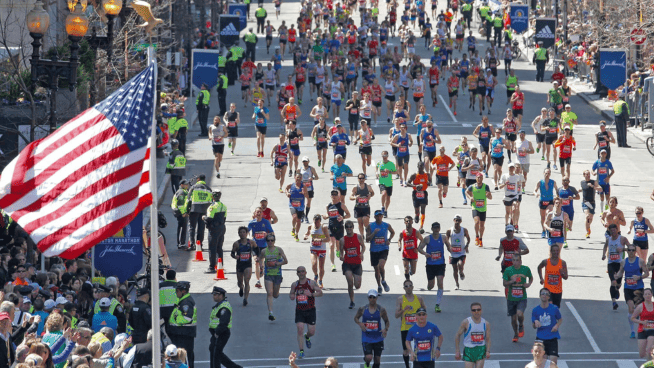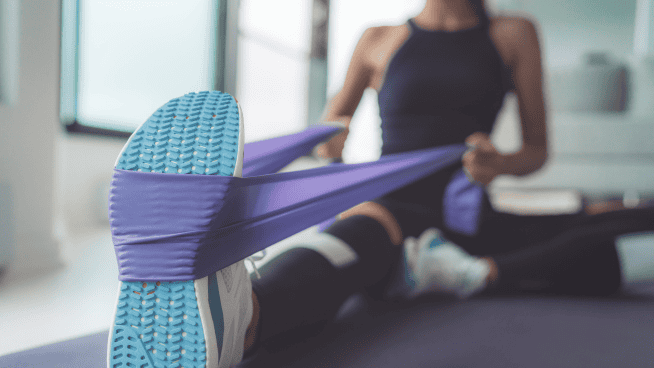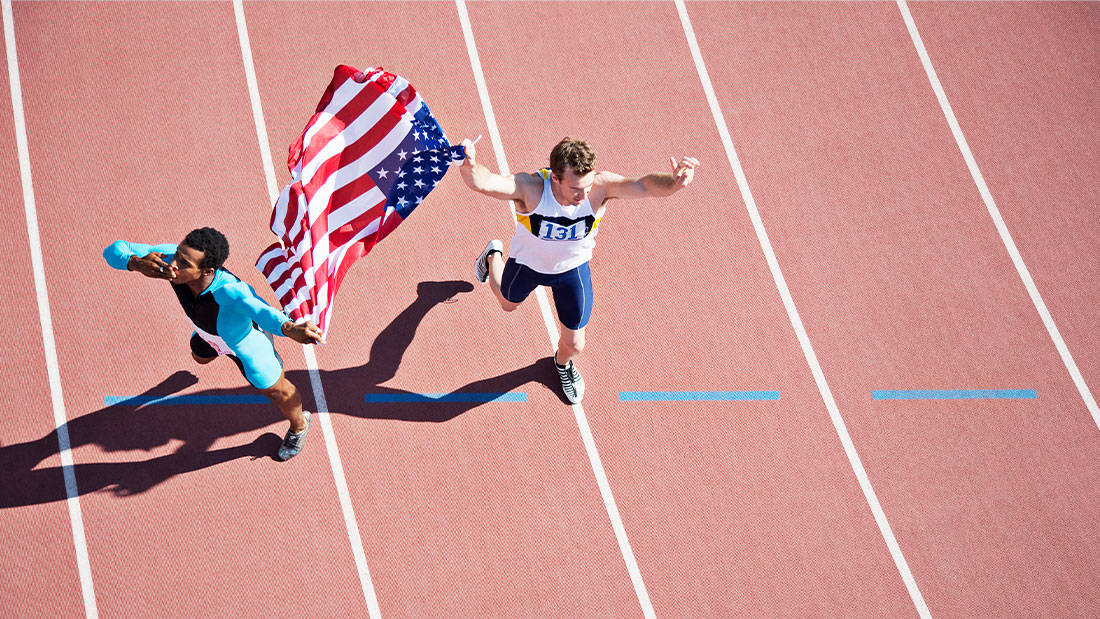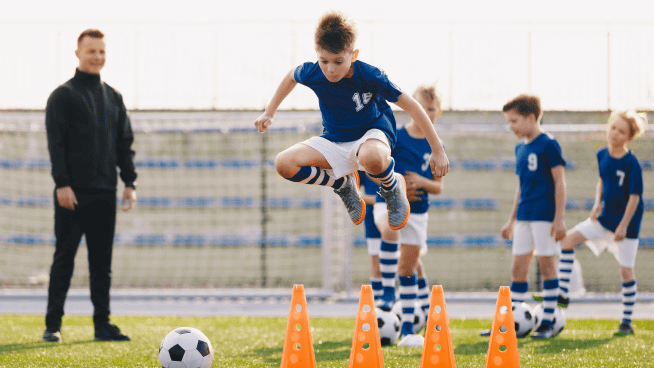6 Popular Sport Technology Devices to Increase Athletic Performance
Technology and sports performance have become synonymous with one another over the past several decades. The primary function most of these technologies serve is to log or track raw data within training, and then aggregate it in a way that’s digestible for the end user to guide decision making. Every piece of technology differs in complexity or purpose however, several pieces of technology in combination with one another serve as an excellent complimentary way to monitor and guide athletes training for the best possible outcome.
Examples of extremely simple technologies include things like Bluetooth scales or thermometers for instantaneous biometric markers, whereas more complex technologies such as dual force plates and/or DEXA machines provide longitudinal data points to track performance or anthropometric measurements respectively. While it’s easy to get overwhelmed with the wide array of technologies available today, there are several that rank near the top in terms of efficacy, cost, and user compatibility.
1) Heart Rate Monitor:
One of the most used and easy to implement pieces of technology for training is a heart rate monitor. These come in all shapes/sizes from wrist watches to chest straps and are as “plug and play” as it gets. The beauty of a heart rate monitor is that often they are relatively affordable, and they can be used with little to no education. Doing a simple calculation of your projected heart rate max (220-your age) and then taking a percentage of that (i.e., 60%) can give you a target range with which to monitor your heart rate during cardiovascular exercise. Wearing a heart rate monitor takes the guess work out of the whole ordeal and allows you to rely on an objective measure in real time as well as track improved performance over time such as decreased heart rate at the same work output. It’s easy to get a bit too carried away with heart rate monitoring and while it does not assist much in terms of exercise types such as strength training, it’s a must have for all athletes/individuals who regularly partake in cardiovascular training.
2) Sleep trackers:
I use the term “sleep tracker” to encompass anything that fall under the vein of an OURA ring, WHOOP band, or even an apple watch because they all have varying degrees of use and efficacy. These pieces of equipment double as heart rate monitors, but what they provide in addition is biometric markers such as HRV and sleep quality. Without getting too deep into the weeds of recovery performance and HRV, HRV stands for “Heart Rate Variability” and is essentially a measurement of your average time between heart beats. Generally, the higher the average time between beats the greater recovery you have and vice versa. Sleep dovetails off this measurement and generally speaking, the higher quality sleep you have the greater your HRV score is. What’s different about these sleep trackers from a heart rate monitor is what I just mentioned, they provide data inferenced from the heart rate instead of just the raw data itself, hence making it more valuable but also a bit more expensive. There are certainly more these devices can do including hydration monitoring, menstrual tracking, and more but in general their biggest asset comes down to the ability to track your sleep plus how it impacts your recovery.
3) Velocity Trackers:
There are several excellent velocity-based tracking units available on the market today including brands like Gymaware, Perch, Elite Form, and TENDO to name a few, all of which monitor the velocity with which you move a particular load. This is important because the velocity of a barbell during a back squat, for example, can tell us a lot about your ability or potential to move heavier weights or your general improvement over time. Before velocity trackers came along, coaches relied a lot more on the naked eye to gauge whether an athlete was moving a weight with greater speed or not which is important for improving rate of force production. Strength is an important foundation for nearly everything, but athletes must be able to move moderately heavy loads in a short amount of time to be most effective. Tracking the velocity with which a load moves can tell us if we are improving, fatigued, and even what our potential 1 rep maximum is without ever having to go to failure. These pieces of equipment are become more affordable by the year and are commonplace in most high-performance settings. Check out work by a former mentor of mine, coach Dan Baker to learn more on this if you’re interested.
4) Force Plates:
Force plates are quite simple pieces of equipment at their core which become increasingly complicated the deeper one dives into the analysis of their use. In a nutshell, they measure the ground reaction force of an athletic movement (most often jumping) and then depending on the software associated with them or the practitioner analyzing the movement, they provide hundreds of data points on the performance of the movement. A common assessment is what is known as a “Counter Movement Jump” or “CMJ” for short which is nothing more than an athlete who starts standing straight up, squats down in a rapid fashion, and jump as high as possible. This movement alone provides and incredible amount of insight into how much power the athlete can generate, whether or not they have a significant asymmetry between limbs, what their landing mechanics look like, and so much more. These pieces of equipment are a staple in nearly every high-performance environment in the college ranks and above (some high schools too) but is rather costly currently. Force plates are becoming more affordable but despite their price still being rather expensive they are mostly worth it because of the longitudinal data points they provide. Coaches/sports medicine staff can determine whether an athlete is prepared to train, healing properly form an injury, and maximizing their training program all from regular data collection thanks to these tools.
5) Training Apps:
While this may seem obvious, training apps such as Train Heroic, True Coach, Bridge, and Teambuildr are all platforms with which coaches can provide athletes their workouts and athletes can log their results. This may not seem groundbreaking but compare the use of software’s like these to the old school excel cards coaches like me had to use back in the day (shoutout to my fellow coaches who know what I’m talking about) these are game changers. I was one who fought “screens in the weight room” for a long time but once you weight the positives versus the negatives these are a no-brainer. These applications allow coaches to place a prescribed workout on a calendar for a particular day with all necessary information including demonstration videos, individualize load percentages, notes, and more. It can be hard to get past the mindset of technology being a distraction in the weight room as has been the case in the past, but these apps are here to stay. Furthermore, nearly all these apps provide metrics such as volume load, RPE scoring, leaderboards, and predicted RM% without the added headache of having to calculate by oneself. Most of these tools have become relatively affordable nowadays and are well worth the cost, particularly for coaches like me who work primarily work with remote athletes nowadays. Don’t write these off!
6) Timing Gates:
Timing gates are a must if you’re e looking to improve your speed, change of direction, or sprinting performance. A few companies I’ve personally used in the past are Freelap, Dartfish, and Smartspeed (now with Vald at the time of this article), all of which provide the bare necessities. While you can use hand timing if you’re strapped for cash to measure speed/acceleration metrics, I highly advise using the pieces of tech because of their sheer accuracy and added application features. When working with a volume of athletes the last thing you want to be doing is relying on your eyeballs and reaction time to stop/start a watch or your phone while fumbling with a pen and paper between busy repetitions. These pieces of equipment collect and store athlete times without having you having to think and allow you to focus on what matter most, coaching! Similar to other pieces of tech discussed previously, more and more of these items are starting to provide analytical/load monitoring elements to the software piece of their applications which only enhance your analysis and data sharing as a coach/athlete. I highly encourage you to give them a try.
While technology is not the foundation of what makes a successful training program it is becoming increasingly important. The items discussed above are by no means exhaustive but are some of the most commonly used and semi-affordable pieces to implement depending on your individual situation. Leveraging technology pieces like these are an investment worthwhile if used appropriately and can provide depth in analysis/decision making. Start by implementing one at a time and ensure that you understand it’s use appropriately. Remember, data collection simply for the sake of collection is a waste of time however data collection plus analysis and action equal results.
RECOMMENDED FOR YOU
MOST POPULAR
6 Popular Sport Technology Devices to Increase Athletic Performance
Technology and sports performance have become synonymous with one another over the past several decades. The primary function most of these technologies serve is to log or track raw data within training, and then aggregate it in a way that’s digestible for the end user to guide decision making. Every piece of technology differs in complexity or purpose however, several pieces of technology in combination with one another serve as an excellent complimentary way to monitor and guide athletes training for the best possible outcome.
Examples of extremely simple technologies include things like Bluetooth scales or thermometers for instantaneous biometric markers, whereas more complex technologies such as dual force plates and/or DEXA machines provide longitudinal data points to track performance or anthropometric measurements respectively. While it’s easy to get overwhelmed with the wide array of technologies available today, there are several that rank near the top in terms of efficacy, cost, and user compatibility.
1) Heart Rate Monitor:
One of the most used and easy to implement pieces of technology for training is a heart rate monitor. These come in all shapes/sizes from wrist watches to chest straps and are as “plug and play” as it gets. The beauty of a heart rate monitor is that often they are relatively affordable, and they can be used with little to no education. Doing a simple calculation of your projected heart rate max (220-your age) and then taking a percentage of that (i.e., 60%) can give you a target range with which to monitor your heart rate during cardiovascular exercise. Wearing a heart rate monitor takes the guess work out of the whole ordeal and allows you to rely on an objective measure in real time as well as track improved performance over time such as decreased heart rate at the same work output. It’s easy to get a bit too carried away with heart rate monitoring and while it does not assist much in terms of exercise types such as strength training, it’s a must have for all athletes/individuals who regularly partake in cardiovascular training.
2) Sleep trackers:
I use the term “sleep tracker” to encompass anything that fall under the vein of an OURA ring, WHOOP band, or even an apple watch because they all have varying degrees of use and efficacy. These pieces of equipment double as heart rate monitors, but what they provide in addition is biometric markers such as HRV and sleep quality. Without getting too deep into the weeds of recovery performance and HRV, HRV stands for “Heart Rate Variability” and is essentially a measurement of your average time between heart beats. Generally, the higher the average time between beats the greater recovery you have and vice versa. Sleep dovetails off this measurement and generally speaking, the higher quality sleep you have the greater your HRV score is. What’s different about these sleep trackers from a heart rate monitor is what I just mentioned, they provide data inferenced from the heart rate instead of just the raw data itself, hence making it more valuable but also a bit more expensive. There are certainly more these devices can do including hydration monitoring, menstrual tracking, and more but in general their biggest asset comes down to the ability to track your sleep plus how it impacts your recovery.
3) Velocity Trackers:
There are several excellent velocity-based tracking units available on the market today including brands like Gymaware, Perch, Elite Form, and TENDO to name a few, all of which monitor the velocity with which you move a particular load. This is important because the velocity of a barbell during a back squat, for example, can tell us a lot about your ability or potential to move heavier weights or your general improvement over time. Before velocity trackers came along, coaches relied a lot more on the naked eye to gauge whether an athlete was moving a weight with greater speed or not which is important for improving rate of force production. Strength is an important foundation for nearly everything, but athletes must be able to move moderately heavy loads in a short amount of time to be most effective. Tracking the velocity with which a load moves can tell us if we are improving, fatigued, and even what our potential 1 rep maximum is without ever having to go to failure. These pieces of equipment are become more affordable by the year and are commonplace in most high-performance settings. Check out work by a former mentor of mine, coach Dan Baker to learn more on this if you’re interested.
4) Force Plates:
Force plates are quite simple pieces of equipment at their core which become increasingly complicated the deeper one dives into the analysis of their use. In a nutshell, they measure the ground reaction force of an athletic movement (most often jumping) and then depending on the software associated with them or the practitioner analyzing the movement, they provide hundreds of data points on the performance of the movement. A common assessment is what is known as a “Counter Movement Jump” or “CMJ” for short which is nothing more than an athlete who starts standing straight up, squats down in a rapid fashion, and jump as high as possible. This movement alone provides and incredible amount of insight into how much power the athlete can generate, whether or not they have a significant asymmetry between limbs, what their landing mechanics look like, and so much more. These pieces of equipment are a staple in nearly every high-performance environment in the college ranks and above (some high schools too) but is rather costly currently. Force plates are becoming more affordable but despite their price still being rather expensive they are mostly worth it because of the longitudinal data points they provide. Coaches/sports medicine staff can determine whether an athlete is prepared to train, healing properly form an injury, and maximizing their training program all from regular data collection thanks to these tools.
5) Training Apps:
While this may seem obvious, training apps such as Train Heroic, True Coach, Bridge, and Teambuildr are all platforms with which coaches can provide athletes their workouts and athletes can log their results. This may not seem groundbreaking but compare the use of software’s like these to the old school excel cards coaches like me had to use back in the day (shoutout to my fellow coaches who know what I’m talking about) these are game changers. I was one who fought “screens in the weight room” for a long time but once you weight the positives versus the negatives these are a no-brainer. These applications allow coaches to place a prescribed workout on a calendar for a particular day with all necessary information including demonstration videos, individualize load percentages, notes, and more. It can be hard to get past the mindset of technology being a distraction in the weight room as has been the case in the past, but these apps are here to stay. Furthermore, nearly all these apps provide metrics such as volume load, RPE scoring, leaderboards, and predicted RM% without the added headache of having to calculate by oneself. Most of these tools have become relatively affordable nowadays and are well worth the cost, particularly for coaches like me who work primarily work with remote athletes nowadays. Don’t write these off!
6) Timing Gates:
Timing gates are a must if you’re e looking to improve your speed, change of direction, or sprinting performance. A few companies I’ve personally used in the past are Freelap, Dartfish, and Smartspeed (now with Vald at the time of this article), all of which provide the bare necessities. While you can use hand timing if you’re strapped for cash to measure speed/acceleration metrics, I highly advise using the pieces of tech because of their sheer accuracy and added application features. When working with a volume of athletes the last thing you want to be doing is relying on your eyeballs and reaction time to stop/start a watch or your phone while fumbling with a pen and paper between busy repetitions. These pieces of equipment collect and store athlete times without having you having to think and allow you to focus on what matter most, coaching! Similar to other pieces of tech discussed previously, more and more of these items are starting to provide analytical/load monitoring elements to the software piece of their applications which only enhance your analysis and data sharing as a coach/athlete. I highly encourage you to give them a try.
While technology is not the foundation of what makes a successful training program it is becoming increasingly important. The items discussed above are by no means exhaustive but are some of the most commonly used and semi-affordable pieces to implement depending on your individual situation. Leveraging technology pieces like these are an investment worthwhile if used appropriately and can provide depth in analysis/decision making. Start by implementing one at a time and ensure that you understand it’s use appropriately. Remember, data collection simply for the sake of collection is a waste of time however data collection plus analysis and action equal results.

